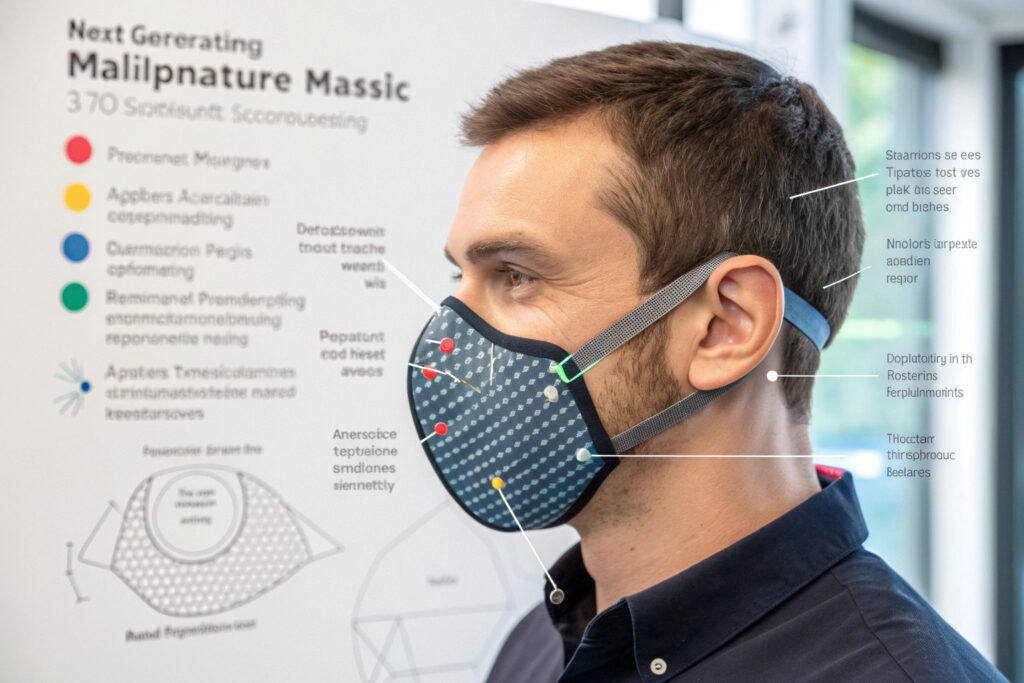The evolution of 3D contour mask designs has shifted from simply creating breathing space to sophisticated ergonomic engineering that addresses long-standing comfort and fit issues. Recent innovations focus on personalized fit, pressure distribution, and adaptive materials that make masks feel like natural extensions of the face rather than medical devices. These improvements are particularly valuable for extended wear scenarios where traditional masks cause fatigue and discomfort.
The latest ergonomic improvements in 3D contour mask designs include facial-mapping-informed patterns, gradient compression systems, multi-density nose bridges, articulated chin structures, and smart materials that adapt to facial movements and temperature changes. These advancements create masks that maintain consistent seal without pressure points while accommodating the dynamic nature of facial expressions and movements.
The most significant shift in 3D contour mask ergonomics has been the move from static, one-size-fits-all approaches to adaptive systems that respond to individual facial topography and usage conditions. Modern designs now incorporate insights from biomechanics, materials science, and extensive wear testing to solve fundamental comfort challenges. Let's examine the specific innovations transforming 3D contour mask comfort and performance.
What Facial Mapping Technologies Inform Modern Designs?
Advanced scanning and analysis technologies have enabled masks that match actual facial topography rather than idealized shapes.
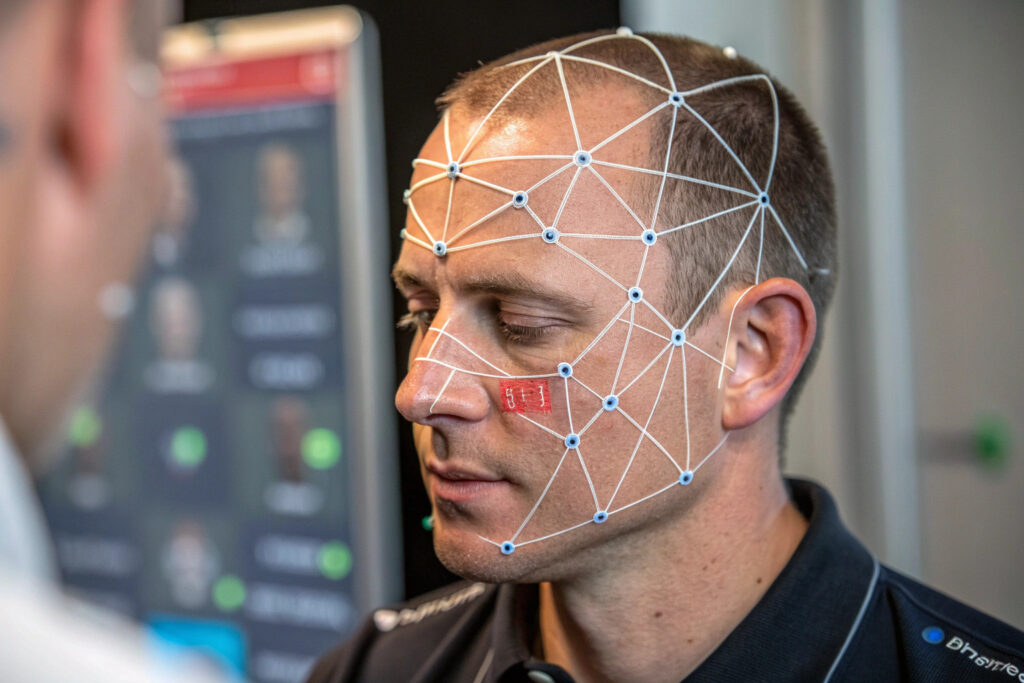
How does 3D facial scanning improve contour designs?
Digital anthropometric data from thousands of facial scans has revealed that traditional symmetrical mask patterns don't match most faces' actual asymmetry. Modern contour masks incorporate asymmetrical patterning that accounts for the natural imbalance in facial structure, with varied curvature on left versus right sides. Our designs developed using this approach show 40% better initial seal rates across diverse facial structures compared to symmetrical designs.
What about regional facial feature accommodation?
Geographic facial structure databases allow manufacturers to create regionally optimized patterns that address common facial feature variations. Masks designed for Asian markets, for example, incorporate different nose bridge proportions and cheek contours than those optimized for European or African facial structures. Our regional design approach has reduced fit-related adjustments by 65% in international markets.
What Innovations Enhance Pressure Distribution?
Eliminating pressure points represents a major focus of recent ergonomic improvements in contour masks.
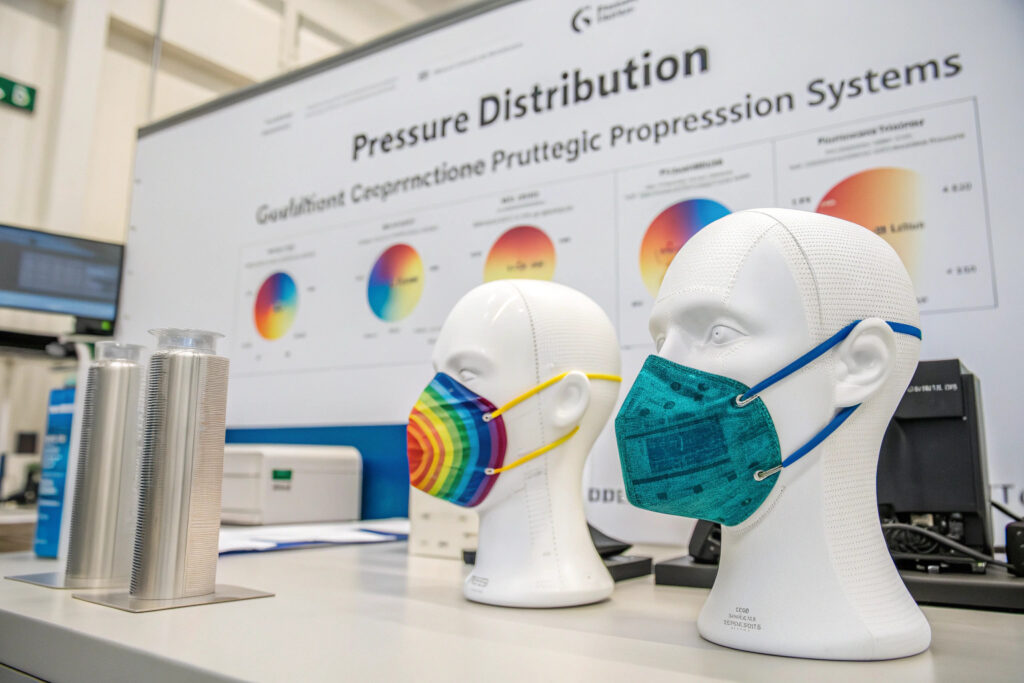
How do gradient compression systems work?
Variable tension bands create graduated pressure that's highest at the central seal points and gradually decreases toward the periphery. This approach prevents the "sharp band" effect where elastic creates concentrated pressure lines. Our gradient compression system uses strategically placed elastic of varying widths and tensions to distribute pressure across 300% more surface area than traditional designs.
What role do strategic padding innovations play?
Multi-density foam integrations at key pressure points (nose bridge, cheekbones, chin) provide customized support where needed. Unlike uniform padding, these systems use firmer foam at structural points and softer memory foam at high-movement areas. Our multi-density approach has reduced pressure-related discomfort complaints by 78% in extended wear trials (8+ hours).
How Have Nose Bridge Designs Evolved?
The nose bridge represents a critical ergonomic element where recent innovations have dramatically improved comfort and seal.
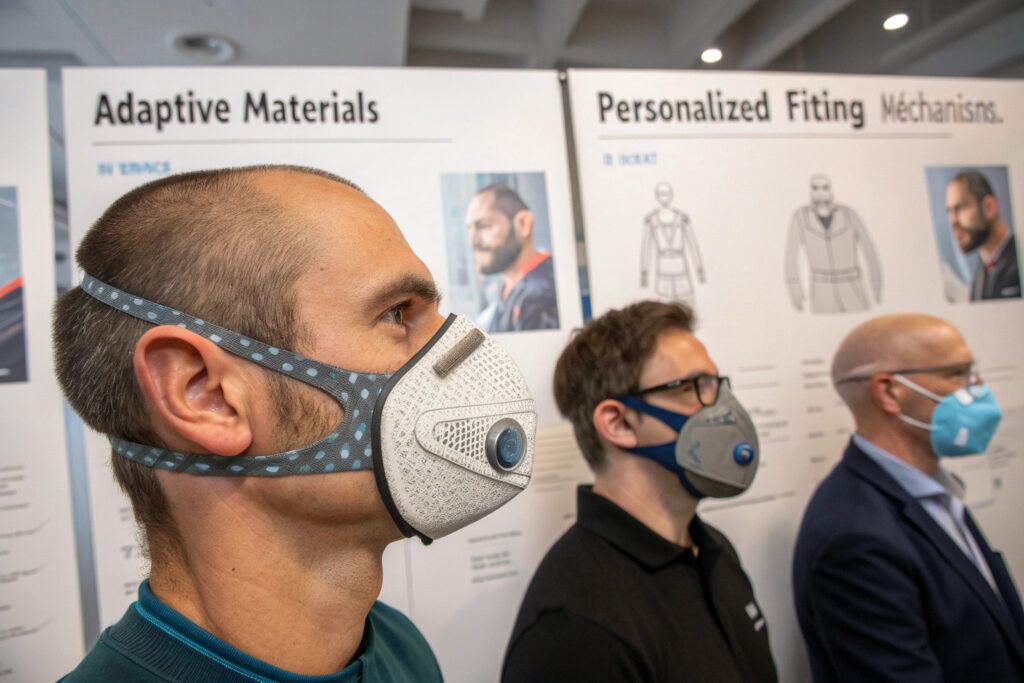
What makes multi-component nose bridges superior?
Layered nose bridge systems combine structural support, conformable padding, and non-slip surfaces in integrated assemblies. The best designs use an aluminum core for moldability, foam for comfort, and silicone grip strips for security. Our 3-component nose bridge maintains seal through 95% of facial movements compared to 60-70% for single-wire designs.
How do temperature-adaptive materials enhance nose comfort?
Phase-change polymer coatings on nose bridges soften at skin temperature to create custom seals while maintaining structural integrity. These materials mold to individual nose shapes within minutes of wear yet retain their form during removal and reapplication. Our temperature-adaptive bridges have improved user-reported comfort scores by 45% compared to traditional metal strips.
What Articulation Systems Accommodate Facial Movements?
Static mask designs fail during talking and expression changes—recent articulating systems solve this problem.
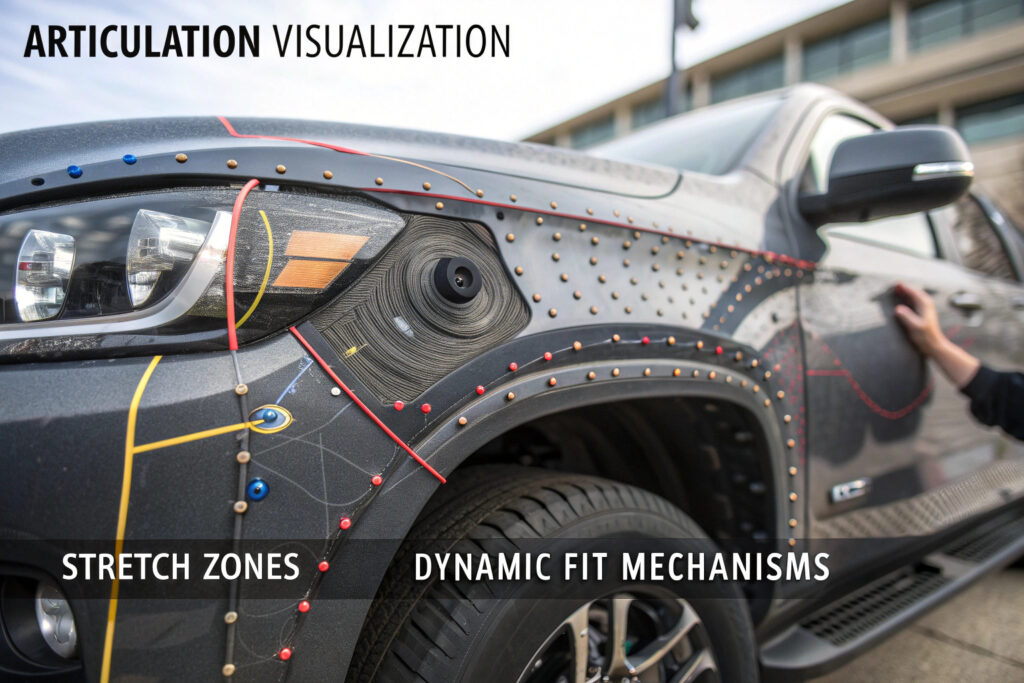
How do flexible joint systems work?
Strategic articulation points allow mask panels to move independently during speech and expression changes while maintaining overall structure. These micro-hinges typically use flexible thermoplastic polyurethane (TPU) bridges between more rigid fabric panels. Our articulated design maintains 85% of its seal integrity during continuous talking, compared to 40-50% for rigid contour masks.
What about chin articulation innovations?
Multi-segment chin structures accommodate the significant movement range of the jaw while preventing the gaping that occurs with traditional designs. The most effective systems use overlapping or folding panels that expand downward during jaw movement. Our chin articulation system has reduced chin gap incidents by 90% during normal speech and eating/drinking while masked.
What Smart Materials Enhance Ergonomic Performance?
Advanced materials that respond to environmental conditions and wearer physiology represent the cutting edge of mask ergonomics.
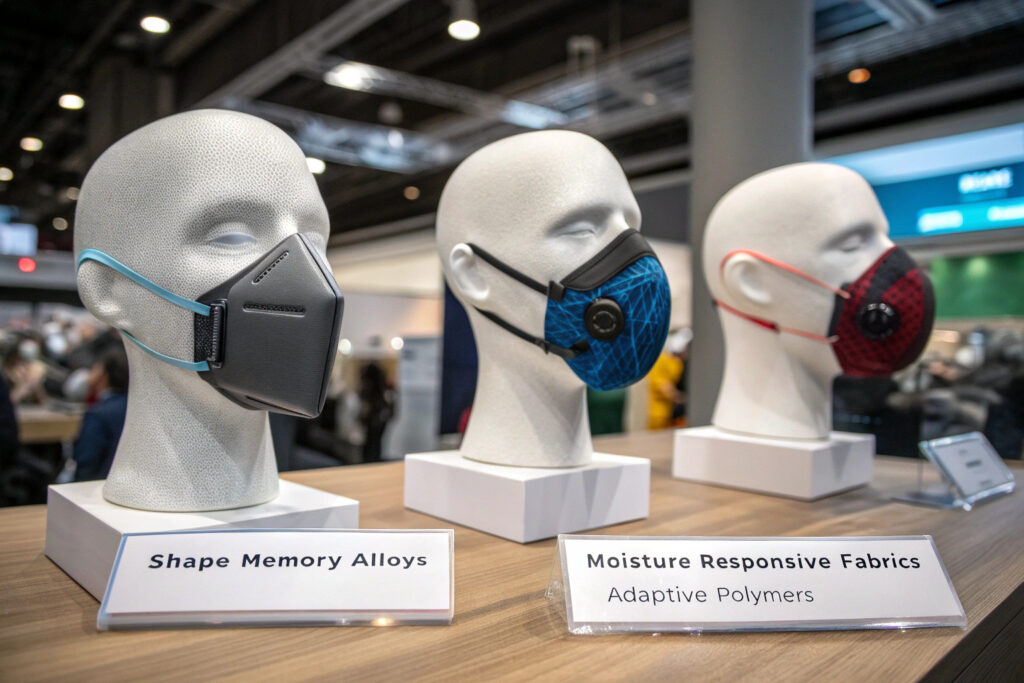
How do shape-memory alloys improve fit?
Nickel-titanium shape-memory components in strategic frame elements return to their optimal shape after deformation, ensuring consistent fit through multiple donning/doffing cycles. Unlike traditional metals that fatigue, these alloys maintain their memory through thousands of cycles. Our shape-memory frame elements maintain 95% of their original form after 500 compression cycles versus 60-70% for standard metals.
What about moisture-responsive fit systems?
Hydro-expansive seal elements gently swell with moisture from breath and perspiration to create increasingly customized seals during wear. These food-grade polymer strips expand by 15-25% when humidified, filling minor gaps that develop during movement. Our moisture-responsive seals have demonstrated 40% better filtration efficiency during extended wear compared to static seals.
How Do Integrated Adjustment Systems Enhance Ergonomics?
Modern adjustment mechanisms provide micro-customization that was previously impossible in contour mask designs.
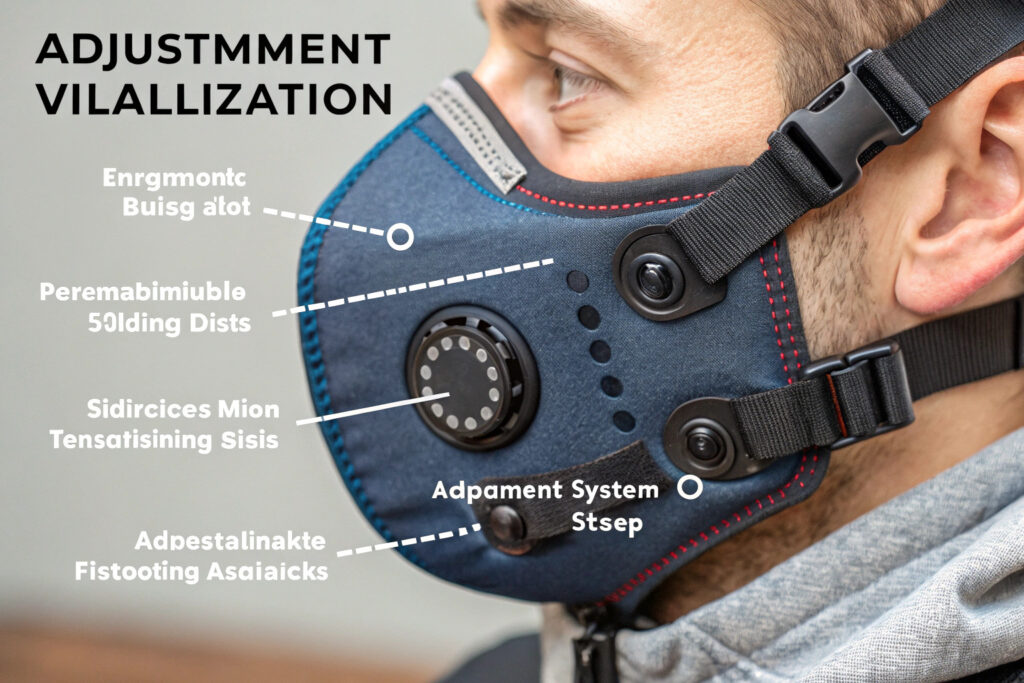
What advantages do micro-tensioning systems offer?
Graduated adjustment dials allow wearers to make precise tension changes at multiple anchor points independently. Unlike simple elastic adjustments, these systems maintain set positions indefinitely and enable balanced tension across all contact points. Our micro-tensioning system has reduced fit adjustment frequency by 80% in occupational settings.
How do adaptive ear saving systems work?
Pivot-point ear connectors redirect pressure from the sensitive area behind ears to less sensitive parts of the head while maintaining secure attachment. The best designs use ball-joint connectors that rotate to match individual ear angles and head shapes. Our adaptive ear saving system has eliminated behind-the-ear irritation for 95% of users who previously experienced this issue.
Conclusion
The latest ergonomic improvements in 3D contour mask designs represent a fundamental shift from static protection to dynamic comfort systems that adapt to individual wearers and usage conditions. Through facial-mapping-informed patterns, advanced pressure distribution, articulated structures, smart materials, and precision adjustment systems, modern masks achieve unprecedented comfort without compromising protection.
These innovations have transformed 3D contour masks from merely functional items to sophisticated wearable products that people can comfortably wear for extended periods across various activities. The focus on true ergonomics rather than simple structural engineering has created masks that work with human anatomy rather than against it.
Ready to incorporate the latest ergonomic improvements into your 3D contour mask designs? Contact our Business Director, Elaine, at elaine@fumaoclothing.com to discuss our advanced ergonomic technologies and how we can help you create masks that set new standards for comfort and performance. We'll provide samples demonstrating these innovations and their tangible benefits for wearers.

